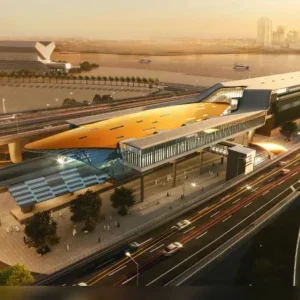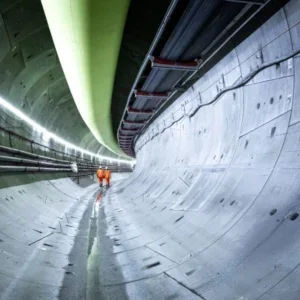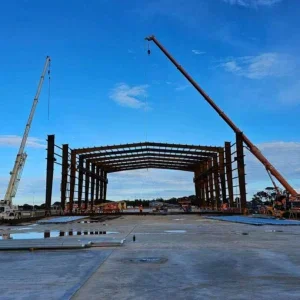On 5 May, a 9.5m diameter Wirth double shield TBM successfully completed the east bore of the 28.4km long Guadarrama rail tunnel in Spain.
A ceremony was held to mark the occasion with guests including Magdalena Alvarez, minister of public works, with the breakthrough shown on large screens. After the breakthrough, the minister was shown a model of the Wirth TBM as part of a tour and described the tunnel completion as a “historic moment when Madrid and Castilla Leon were joined”.
The twin tunnel project crosses the Sierra de Guadarrama at overburdens of up to 1.200m as part of the Madrid-Segovia-Valladolid high-speed line scheme. This section was termed contract 1 and is being built by a Necso / Dragados / Tecsa JV along a route that crosses igneous and metamorphic rocks. The geology has been characterized as predominantly gneisses, with much of the balance granitoides and the remainder comprising dykes and faults.
A double shield TBM design was chosen to manage the variance in the expected ground conditions, with primary linings installed consecutive with advance for the fault zones and concurrent with advance in better ground conditions. Three other double shield TBMs are associated with the project; another Wirth machine and two Herrenknecht TBMs. Each manufacturer has completed a north-south drive and a Herrenknecht machine is currently working on the final west bore running south-north. With a cost of US$1.5bn of which 73% was raised through EU subsidies, 4M.m3 of material will have been excavated by the time all of the tunnels are complete.
Roughly 22% of the material required for segment manufacture, track bed and fill was recycled from the tunnel spoil. On such a massive project, event the annulus grout required will total 286,550m3.
The twin running tunnels will be linked by cross passages at 250m centres. The scheme also includes a 500m long refuge that has been designed to accommodate 1,200 people for 48 hours with a guaranteed air supply. Currently it is anticipated that the line could begin revenue service as early as 2007.







